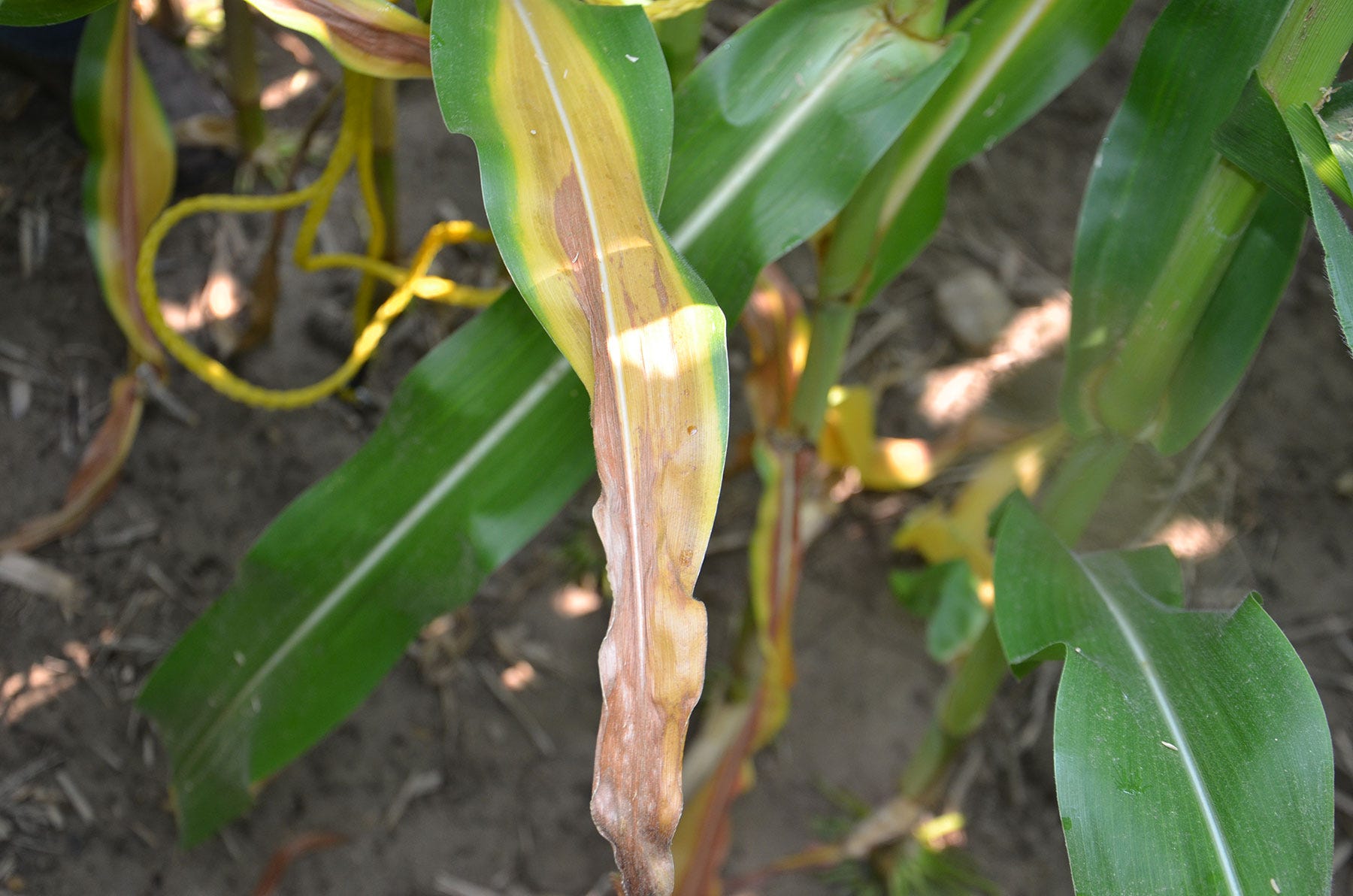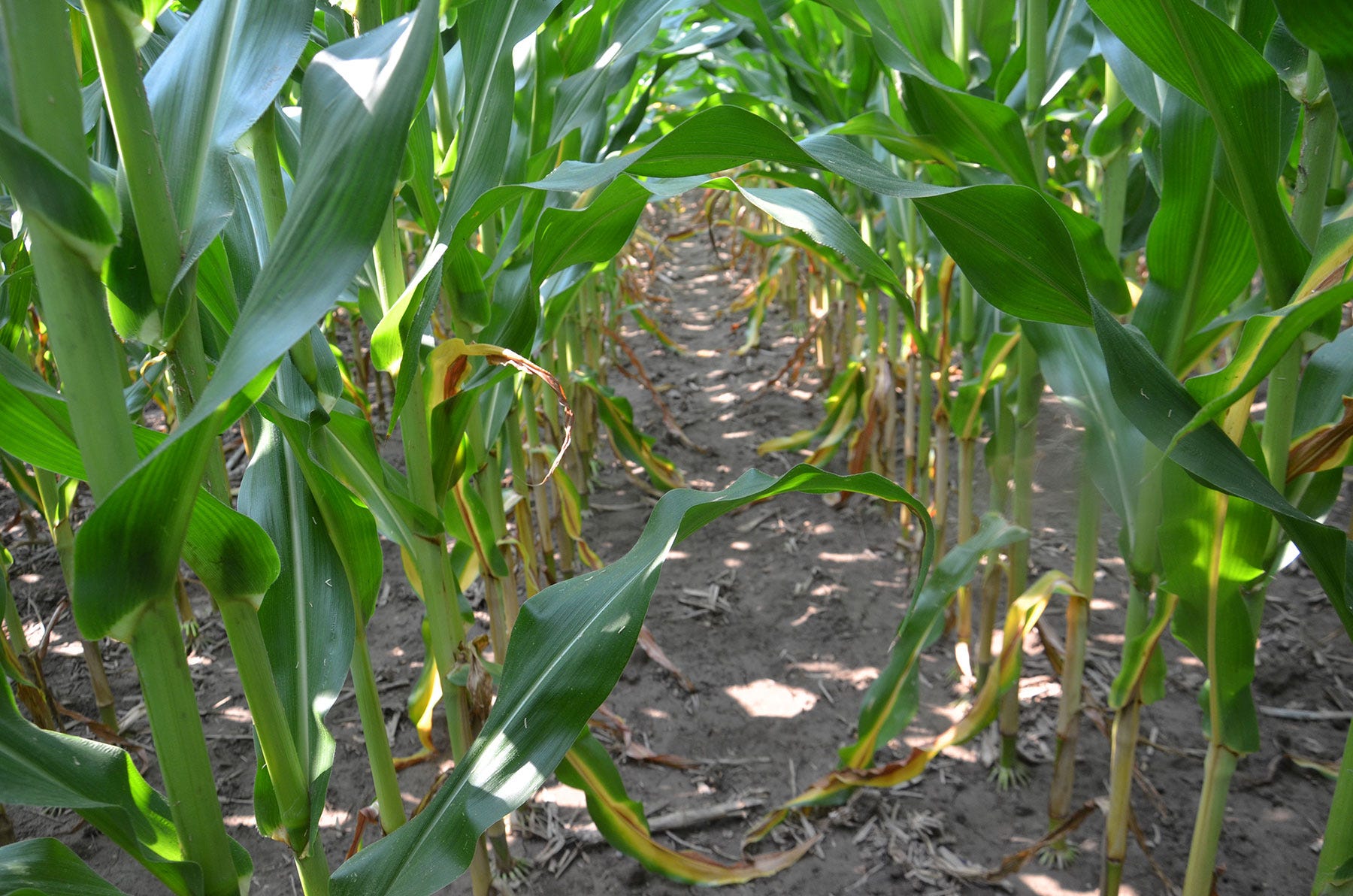
Does your corn have enough nitrogen to finish the year? Perhaps this is the better question: How will you know if corn has enough nitrogen, or if it runs out before kernels reach physiological maturity, also known as black layer?
“It’s another reason why you want to scout fields in late summer,” says Dave Nanda, director of genetics for Seed Genetics Direct, sponsor of Corn Watch ’22. “If your corn remains dark green until near the end of the season, then you probably have all the nitrogen you need. But if you start noticing symptoms of nitrogen deficiency, then you may want to rethink your nitrogen program for next season. The kicker, though, is that since the weather is different every year, how plants respond to nitrogen is also different every year.”
Nitrogen deficiency symptoms
Here are classic symptoms of nitrogen deficiency in corn. Refer to the Purdue University Corn and Soybean Field Guide for more information.
Pale green color. If corn doesn’t develop that vibrant, dark green color during the season, it may be because nitrogen has been low all year long. In extreme cases, corn will even turn yellow from lack of nitrogen. More often, it’s pale green.
Plants will produce ears, Nanda says. “They just won’t be as long, and they may not be as big around,” he says. “That’s why yield estimates fall off quickly when nitrogen is lacking.”
How much yield can you lose? “Two years ago, we checked a field where some places were fine, but others were pale green all year due to wetness and lack of nitrogen,” Nanda recalls. “Yield checks showed a 90- to 100-bushel-per-acre yield hit for having pale-green, N-deficient plants.”
Classic leaf firing. This can literally look like the leaf is on fire. It starts at the tip and goes down the midrib in the center of the plant. As the plant continues to be deficient, leaf tissue dies and becomes brown. Losing that much leaf area for photosynthesis contributes to the plant’s lowered ability to produce yield.

CLASSIC SYMPTOM: With leaf firing from nitrogen deficiency, browning and yellowing starts at the tip of the leaf and moves down the midrib in a V shape. As the deficiency worsens, tissue becomes necrotic and dies.
Lower leaves with symptoms. Usually, the lower, older leaves in the canopy will fire first. That’s not just because there is a lack of light low in the canopy. If the classic firing is occurring on lower leaves near the ground first, it’s directly related to the plant’s inability to obtain as much nitrogen as it needs. Lower leaves tend to show it first.
“Look down under the leaf canopy and see what you can find,” Nanda says.

LOWER LEAVES: Finding leaves on the lower part of the plant showing signs of nitrogen deficiency first is common. Then, the symptoms move up the plant.
About the Author(s)
You May Also Like




